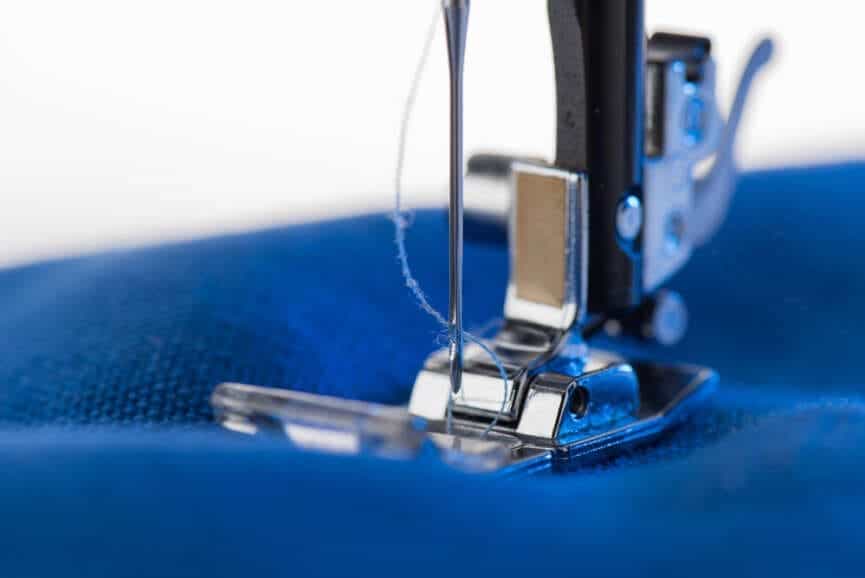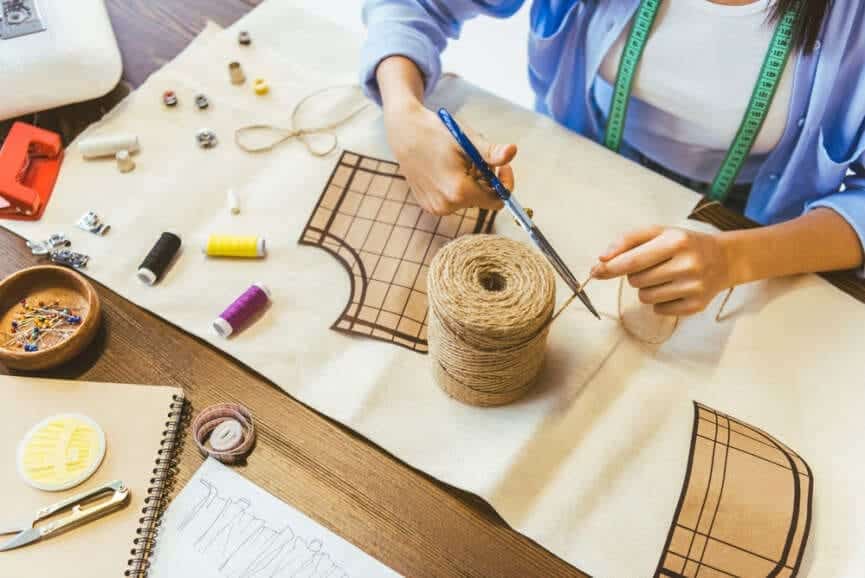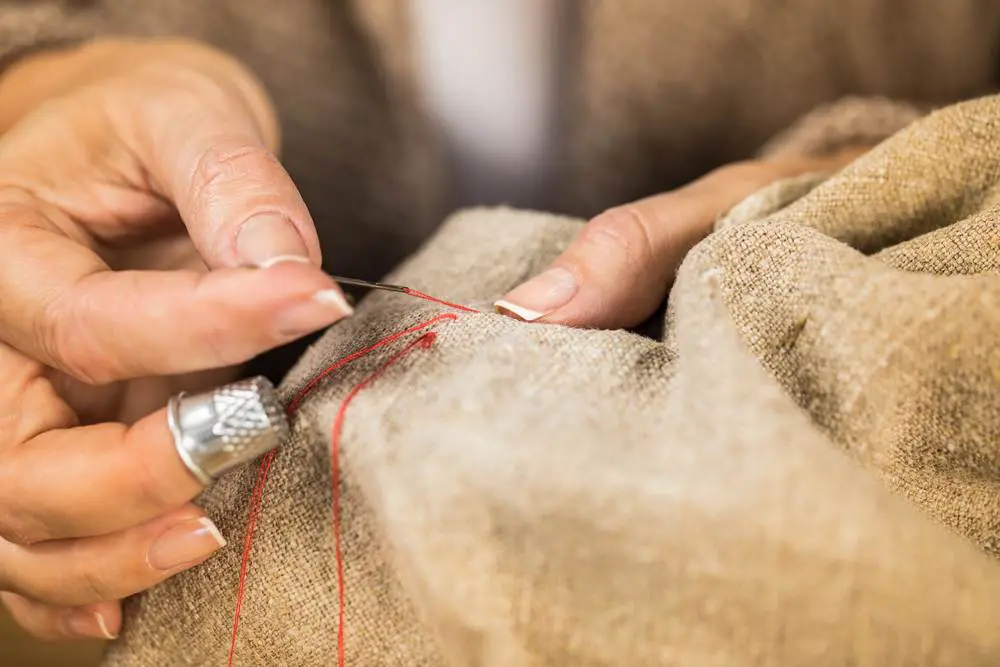Many people believe that mastering the art of sewing a gusset on a bag is incredibly hard to achieve, regardless of the experience or skill you have. In Fact you can argue sewing a gusset in a bag is a fundamental skill for any aspiring or experienced seamstress or tailor.
However, as it is an essential structure element in many types of bags. Regardless of what’ve created crafting a tote, handbag, or backpack, It will significantly improve the quality and durability of your all creations.
In short, mastering this skill is essential if you want to improve your craft.
So, if you are somebody looking to acquire this skill, in this blog, we will go step by step guide that you can put to properly achieve your desired results.
Sounds Interesting? Let’s begin.

Step-by-Step Process For Gusset in a Bag
Alright, now that we have our materials and tools ready, it is time to learn how to do it. Let’s go over to the step-by-step process of properly sewing a gusset in a bag.
1. Prepare Your Bag Panels
Alright, it’s to start! First, Make sure to account for seam allowances when cutting your pieces. Remember, these panels will form the front, back, sides, and bottom of your bag. Second, Begin by cutting the fabric panels for your ideal bag following the pattern or dimensions you’ve chosen for your design.
2. Cut the Gusset Fabric
Now, for the second step, cut the fabric for the gusset. The size of the gusset depends on the bag’s design and the depth you want to get. So, Measure and cut the gusset fabric accordingly. Also, it is important to keep in mind that the gusset should match the width of the bag’s sides and the length of the bag’s perimeter, minus any seams.
3. Attach the Gusset to the Sides
The third step is to attach the gusset! with right sides together, pin or clip the gusset fabric to the sides of the bag. Make sure to align the top edges and any raw edges where the gusset meets the sides.
Remember, If your gusset is rectangular, you’ll have square corners to deal with. Luckily, for triangular gussets, the corners will naturally form.

4. Sew the Gusset to the Sides
Alright, it’s the fourth step! Now, put your sewing machine to use. Use the appropriate seam allowance, typically ½ inch or as specified in your pattern, and stitch the gusset to the sides of the bag. Now, reinforce the stitching at the beginning and end of each seam by backstitching. Then, just continue sewing until you’ve attached the gusset to all sides.
5. Press the Seams
The Fifth step is simple, after sewing, press the seams open to create a clean and professional look. While you are doing that, Ensure that the gusset fabric lays flat against the sides. Also, remember an iron and ironing board are invaluable for this step.
6. Square Corners (For Rectangular Gussets)
Now, what if you want to get the Rectangular gussets. You’ll need to square the corners. To properly do this, first open the bag, then you want to fold the gusset corners diagonally.
Make sure to align the side seam with the bottom seam and pin or clip in place. Now, Stitch across the diagonal line you’ve created and trim any excess fabric. Once correctly done, this step gives the bag its squared shape and reinforces the corners.
7. Finish the Gusset Seam
On step seventh!, this is a crucial step to ensure a clean interior finish. You can finish the seam allowances with a serger, zigzag stitch, or by folding and stitching them down. This step is particularly vital if your bag lining will be visible from the inside.

8. Attach the Bag’s Bottom
It’s time to attach the bag’s bottom. If your bag design includes a separate bottom panel, now is the step where you utilize it. Begin by pining or clipping the bottom panel to the bag and aligning the edges.
Now, Stitch around the perimeter, leaving an opening for turning if necessary. Once sewn, trim any excess fabric and finish the seam allowances as you did with the gusset.
Here you wanna keep in mind, this is tricky to get it done right the first time. So, you wanna be careful while doing this.
9. Turn the Bag Right Side Out
This is the second last step. Begin by carefully turning your bag right side out through the opening in the bottom panel, if applicable, then use a blunt tool, such as a chopstick or a knitting needle, to push out the corners and shape the gusset. Remember to use strong chopsticks if you are using them or switch to steel ones.
10. Final Pressing and Inspection
Alright, good job getting this far; give your bag a final press to eliminate any wrinkles and ensure the gusset and seams lay flat. Now, all that is left is to Inspect the bag for any loose threads or imperfections and make any necessary corrections.
And boom! You have your gusset.

Closing Thoughts
Once you master the art of sewing a gusset in a bag, it will become a fundamental skill for going forward, helping you to be more efficient and impactful with your art.
As this skill not only adds depth and structure to the bag but also enhances its visual gravitas, with you can easily sew base lining, side panels just (Pin then sew both side panels to the front piece of fabric), or entire bag the same width as of front & back and you can easily achieve professional-looking results by following the step-by-step above outlined.
So, grab your fabric, sewing machine, and gusset fabric you like, and get to sewing with confidence! Also, once mastered, you’ll be able to sew gussets into various bag designs, instantly elevating your craft’s functionality and style.








8 Comments
Thank you for the detailed explanation of adding a gusset to a bag. It was a project I was nervous about, but your instructions made it a breeze. I’m really happy with the results.
Thank you for the detailed explanation on how to sew gussets. Your step-by-step instructions and tips were invaluable. I now have the confidence to tackle more complex projects!
Can’t wait to try it out and elevate my bag-making game. Thanks for sharing your expertise!
Bags with extra space. Step by step process and it really explained – a crafting guide for added functionality and style.
Learning how to sew gussets was a revelation! Your comprehensive guide made a seemingly complex technique so much more manageable. I appreciate the clarity and the confidence it instilled in my sewing skills.
I found this article on sewing a gusset in a bag to be incredibly helpful. The notion that it’s a fundamental skill for seamstresses resonated with me, and the step-by-step walkthrough made it accessible for both beginners and experienced crafters. It’s an essential read if you want to enhance the quality and durability of your bag creations.
This guide on sewing a gusset in a bag was quite helpful to me. The idea that it’s a necessary ability for seamstresses struck a chord with me. I appreciate the clarity and confidence it gave me in my sewing abilities.
Anna Smith’s step-by-step guide on sewing a gusset in a bag is a comprehensive resource for both beginners and experienced seamstresses. The clear instructions, accompanied by visuals, cover crucial steps like preparing bag panels, attaching the gusset, and finishing the seams, ensuring a professional result. With emphasis on detail and practical tips, this guide is an invaluable tool for those looking to master the art of sewing gussets for enhanced bag structure and durability.